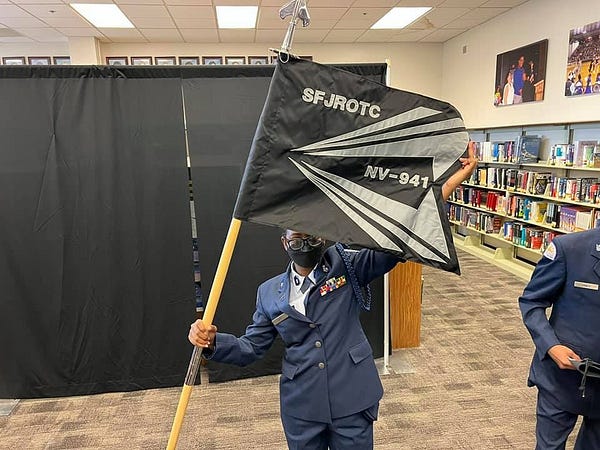It started with a “napkin analysis.” No. It wasn’t on a paper serviette that just supported a half-consumed Vesper. And it didn’t happen inside a Pittsburgh hamburger joint. So don’t expect a story about a Nobel Prize.
It happened inside of the Department of Homeland Security when a handful of cybersecurity experts inside the National Risk Management Center wondered aloud about how many of the nation’s 16 critical infrastructure sectors and the 55 national security functions depended on space-based assets. What Ronald Keen, a senior DHS energy advisor and cybersecurity expert, found was “surprising.”
If you take half a minute you’d probably be able to name at least half of the critical infrastructure sectors. The list includes the manufacturing sector, the financial sector, the communications sector, and so on. The list of national security functions includes things like supplying water and electricity, conducting elections, and preserving Constitutional rights.
Just in case you are wondering, neither list includes providing cocktails or burgers or napkins. Shame. But...
“We weren’t looking for scientific evidence. We were just kind of looking for a “napkin analysis.” What off the top of our heads could we find? And amazingly enough, it wasn’t hard to find a direct connection of all 55 NCFs into a space-based asset. And that was kind of an eye-opener for all of us.”
So would you then believe that space systems infrastructure, the stuff on orbit and on the ground, is not designated as one of the 16 critical infrastructure sectors? Yup....
What’s in this week’s podcast
So while the ink dries on the $1 trillion Infrastructure Investment and Jobs Act - a painfully rare example of bipartisan agreement and teamwork - consider this: the debate over whether space systems infrastructure is a critical sector has been going on in this town for at least four administrations. And with each successive year, our economic and security dependency on space systems grows.
In this episode, I spoke with Keen about not only how dependent we’ve become on space systems, but also how an adversary aiming to damage a critical sector or a critical function could target a space system. And please note, Keen does not express a view either way on the space sector’s non-designation.
To understand what designation would mean and why space systems infrastructure is critical, I went to the Aspen Security Forum 2021 in Washington, D.C. to catch up with Samuel Visner, a featured speaker, and John Doyon. Visner is a technical fellow at the Mitre Corporation, which bills him as its in-house global thought leader in national security. That may be an understatement. Checking out his resume is worth clicking through.

Doyon’s experience also runs deep. Before joining the Intelligence National Security Alliance as its executive vice president Doyon was the Chief Data Officer and Director at the Office of the Director of National Intelligence, National Counterterrorism Center’s Office of Data Strategy & Innovation. Doyon was a career National Security Agency officer, with assignments at the White House, CIA, the Pentagon, and overseas.
Just before the Aspen Security Forum opened on Wednesday, INSA released a white paper, of which Visner was a key author, titled “Designating the U.S. Space Sector as Critical Infrastructure.” They both strongly believe space systems infrastructure needs to be designated as critical national infrastructure.
To hear what they have to say, click on the play button above, or you can go to the Defense & Aerospace Report and listen there. Press the play button and enjoy.
Why it matters
For the 16 critical national infrastructure sectors, the DHS coordinates, organizes, and leads U.S. government departments and agencies and their public-private partnership programs meant to “strengthen and maintain secure, functioning, and resilient critical infrastructure.”
Why? Because while most infrastructure designated as belonging to a critical sector is privately owned, to secure it against adversaries - foreign and domestic - the buck stops with the government. So through a regulatory framework, the private sector must work with the government security experts and vice-versa.
To this end, DHS will receive hundreds of millions out of the Infrastructure Investment and Jobs Act to work with the private sector to secure infrastructure modernization. Think supply chain and systems. Where was a part manufactured? Who wrote the software code, and according to which security standard?
When the first 12 sectors were initially designated during the Clinton Administration in 1998, there were no smartphones or virtual fences for managing livestock, and the Internet of Things was about as real as the ubiquitous computer on the Starship Enterprise serving up a cup of “Earl Grey, hot” by voice command. At that time the comparatively small number of space systems were mostly government-owned and operated, which made securing them a government-only activity - no need to have a dedicated and staffed government structure to loop in and tame the private sector.
That’s just not the case now, with SpaceX launching 60 of its Starlink satellites into orbit at a time, which will greatly expand the communications sector. The Starlink constellation is an extreme example, but it makes the point that like the critical national infrastructure sectors, the United States’ economy and security are becoming more and more dependent on privately-owned space assets - hardware and software.
Why now

In the defense sector, the National Geospatial Agency and the National Reconnaissance Office, both of which have their own satellites, are now turning to commercial organizations for earth observation products. In just the last month NGA inked a contract with HawkEye 360 and the NRO revealed that it buys 50,000 images weekly from Maxar, BlackSky Technology, and Planet, which by the way, was the company that took the images of China’s newly constructed 119 ICBM silos.
The Department of Defense bakes-in hardware and software security standards and an ongoing security partnership into every contract it signs for an acquisition. At least that’s the safe assumption as security is that department’s specialization.
But what about the other critical infrastructure sectors, their departments and agencies, and their dependencies on space systems hardware and software? Is there coordination?
In the manufacturing sector, Varda has selected SpaceX to launch its first on-orbit factory component in 2023 on a SpaceX Falcon 9 and has a contract with Rocket Lab, another private launch company. In the food and agriculture sector, John Deere offers a whole suite of precision farming mobile applications and tractor-mounted satellite communications hardware.
It would seem the balance between privately-owned and publicly-owned space systems infrastructure is tilting. Remember the infrastructure bill is worth about a trillion dollars. The global space sector is on track to surpass that figure annually well before the decade is done.
And yet, like a colleague and friend of mine, Jeff Hill, said in my first podcast episode, “Space is the Wild West.”
To get the full analysis of this story and an idea of where we go from here from the experts, listen to The DownLink, a Defense and Aerospace Podcast above or from the Defense & Aerospace Report… Or use and subscribe through your favorite podcast player.
Like what you’re reading? Get The DownLink in your inbox!
Random Signals

The title is anodyne, but the content within is sobering and includes space developments. On Wednesday the DoD released its annual China report, “Military and Security Developments Involving the People’s Republic of China.” It does what it says on the tin. You can read or listen to my latest reporting on China in Transmissions #013 and #014 or from the Defense & Aerospace Report.
The U.S. Department of Commerce is restricting the frequency and duration US-registered commercial mid- to high-resolution imaging satellites can record any one spot on the earth. Breaking Defense is reporting that the DoD and the intelligence community asked for the new and unpopular rules to protect sensitive installations or operational locations. Waivers can be acquired from the National Oceanic and Atmospheric Administration, which manages licensing for imaging satellites. So who’s stopping imaging satellite operators from other nations from simply doing the same thing?
The U.S. Space Force is seeking help from the space industry to wrap its arms around all of the current and future space domain-related data and make it useful for end-users in all of the military branches. The USSF said on Wednesday that it is seeking a one-stop dashboard-like application that can “synthesize, verify, compare, and combine relevant space domain awareness and environment data in various formats from multiple sources.” The solicitation is open to both foreign and domestic companies, with the possibility of small business grants for U.S.-based organizations.
I don’t call this section of the newsletter Random Signals for nothing... Space Blues, the 5-year-old stallion born in Ireland, on Saturday won the Breeders’ Cup one-mile on grass race, at one of the loveliest venues in the world, the Del Mar Racetrack in California. If you watch the video, Space Blues’s trip started from gate stall 3 and his silks and saddle cloth are royal blue and white.
The all-chestnut thoroughbred, owned by Godolphin and trained by Charlie Appleby, will be missed, because as of today, Sunday, he’s a pensioner who’s being put to stud after winning 11 of his 19 races and earning more than $2.6 million.
Space Blues’s rider William Buick said, “He’s a great little horse and I don’t think he’s had the recognition he deserves. A mile round here suits him down to the ground. I was a bit nervous going into the race as I wanted to give the horse what he deserved.”
This tweet speaks for itself. Plus it’s pretty darn cute.


















